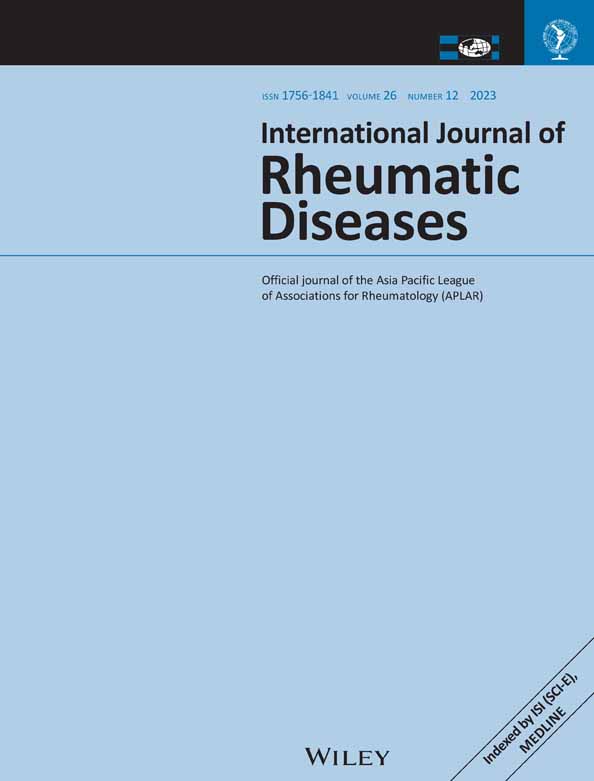The role of plateletcrit in Takayasu arteritis: A potential biomarker for disease activity and 6-month treatment response
Ying Sun, Xiaomeng Cui, and Xiufang Kong equally contributed to this study and shared first authorship.
Abstract
Objectives
To determine the role of plateletcrit as a potential biomarker for disease activity and treatment response in Takayasu arteritis (TAK).
Methods
Totally, 215 newly diagnosed TAK patients were consecutively enrolled. Demographic data, clinical manifestations, laboratory and imaging examinations, and treatment strategy were recorded at baseline and at each visit during the 6-month treatment period. Normal plateletcrit (0.1%–0.4%) and hyper-plateletcrit (>0.4%) observed at baseline were used as group criteria.
Results
At baseline, the overall plateletcrit was 0.32 (0.24–0.38)%, with a normal and high level observed in 172 (80.00%) and 43 (20.00%) patients, respectively. Baseline plateletcrit was significantly higher in patients with active disease and associated with inflammatory biomarkers, including erythrocyte sedimentation rate (ESR), C-reactive protein (CRP), and interleukin (IL)-6 (all p < .01). At 6 months, complete remission was achieved in 171 (79.53%) patients, and a significant decrease in plateletcrit was observed in these cases (p < .01). Patients with a normal baseline plateletcrit were more likely to achieve complete remission compared to those with a high baseline plateletcrit (HR = 4.65, 95% CI: 2.38–19.08, p < .01). In addition, ESR (p = .01) and IL-6 (p = .02) levels were still higher in patients with a high baseline plateletcrit at 6 months. Progression of vascular lesions was indicated in 18 (8.37%) patients at 6 months, and these patients also had significantly higher baseline plateletcrit (p = .03).
Conclusion
Plateletcrit levels were positively related to disease activity and inflammatory index in TAK. Importantly, patients with high baseline plateletcrit levels may show a worse treatment response at 6 months.
CONFLICT OF INTEREST STATEMENT
All authors state that they have no conflicts of interest to declare.
Open Research
DATA AVAILABILITY STATEMENT
The datasets generated during and/or analyzed during the current study are not publicly available due to their proprietary nature and the associated restrictions that apply to their availability to external sources. Data may be made available through the corresponding author upon reasonable request.




